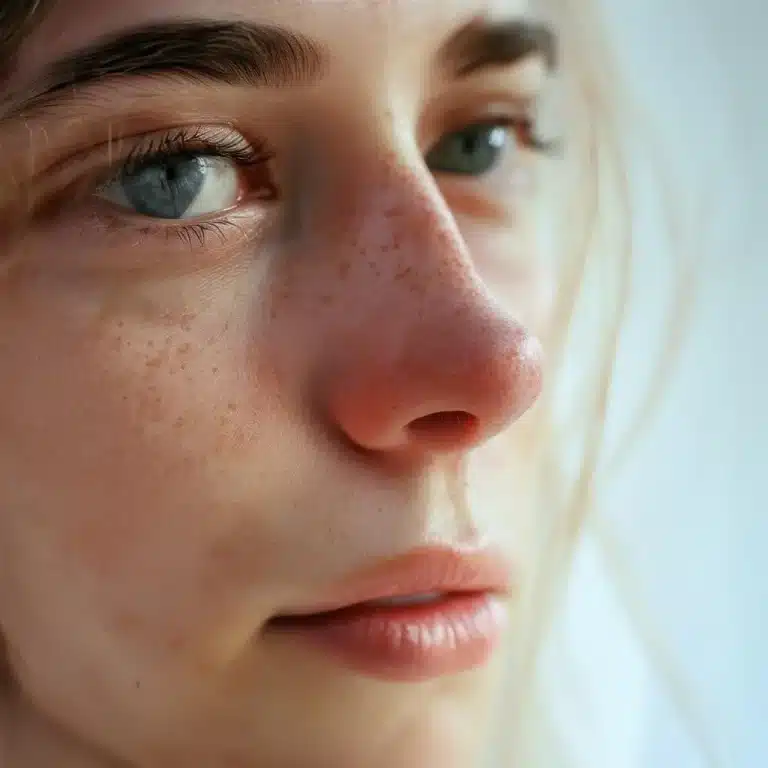
At first glance, social media platforms seem like powerful tools for connecting with new people, but not all new contacts have good intentions or are who they claim to be.
This article explores fake social media profiles, why people create them, the challenges they face, and how you can protect yourself from them in the age of AI.
Specifically, we’ll help you spot fake profile pictures created with AI, which are the first signs to watch out for.
Interested? Good. Let’s get started.

Fake profiles are a problem on all social media platforms, some have more, and some have less, but there are definitely fake profiles on every popular site.
In fact, LinkedIn, a business social network, has experienced a 3-fold increase in fake profiles in recent years according to Statista. Not to mention various dating apps and other platforms that are having a hard time even calculating these numbers.
Thus, knowing why people make fake profiles helps us spot dangers online. This way, we can be smarter about protecting ourselves when we use the internet.
So why do people create fake profiles? Let’s look at a couple of the most common reasons:

Fake profiles are everywhere. So what’s being done to stop them? And what’s the biggest problem for people making these fake profiles? (It’s always good to know your enemy.)
Social media companies use sophisticated AI tools and Captchas to spot and stop fake profiles. These methods don’t prevent fake profiles completely, but they make creating them harder and more time-consuming.
And people seem to be aware of this. In fact, for most, it is easy to spot a low-quality fake profile. These profiles usually have a weird username, don’t have much information on them, and more often than not don’t even have a profile picture.
But the people making fake profiles know this too. They often put more effort into creating better fake profiles when they’re planning bigger tricks.
Their main concern is how to build trust as fast as possible. Since humans are visual beings, a good profile picture is a great asset for building this trust quickly.
With the rise of generative AI tools that can create any imaginable image, these individuals now have a powerful weapon in their toolkit to fool even the most discerning of us.
But don’t worry. Let’s explore how you can easily spot if an account’s profile picture is fake or not.

So how can you detect AI-generated profile pictures?
Well, there are two ways to spot these fake pictures: tool-assisted and manual.
And by combining these two methods, you can be even more confident in determining whether a profile picture you’re looking at is real or AI-generated.
1. Reverse Image Search
To check if a profile picture is real, try a reverse image search on Google Images or TinEye.
Upload the picture and see where else it appears online. If it’s linked to different names or is a stock photo, the profile might be fake.
But freshly AI-generated images may not show up at all. Thus, let’s explore another option.
2. AI Image Detectors
AI image detectors use artificial intelligence to check if pictures are real or fake. They look at things like pixel patterns, image noise, and metadata to find signs of artificial creation.
We’ve tested many AI image detectors and can recommend a specialized tool called Truebees for this task. But there are other good options too, as this field is always improving. Check our directory for more choices.
While these tools are good at spotting fully AI-generated images, they sometimes miss AI-altered photos.
That’s why it’s helpful to also know how to detect AI-generated pictures manually, which we’ll cover next.
AI-generated pictures often look perfect when you first see them. But most have tiny clues that are easy to spot if you know what to look for:
1. Lack of Symmetry:

Look closely at symmetry. People usually like things to match – like wearing the same earrings on both ears or gloves that look the same. But AI doesn’t always get this right. In AI-made pictures, you might see things that should match but don’t.
2. Smoothness Everywhere:

AI-made faces can look too smooth, like someone went overboard with the blur tool in a photo editor. A few years ago, people liked to edit their photos this way. But in 2024, if a picture looks super smooth, it might be fake.
3. Outlandish Eyes:

AI often messes up when making human eyes. Most of the time, the pupils look strange – they might look more like cat eyes than human eyes. Also, the colored part of the eye (the iris) is often shaped weird.
4. Inconsistent Hair:

AI often creates hair that looks different in the same image. You might see very detailed parts, different colors, soft areas, and blurry sections all on one head. If the hair texture isn’t the same throughout, the picture might be AI-generated.
If you notice any of these telltale signs, be more careful about believing if the profile is real. Also, keep a lookout for abnormal fingers or illogical items in the picture.
Fake profiles have become a significant concern on social media platforms. While companies are implementing various measures to combat this issue, the problem persists.
Understanding the motivations behind fake profiles and learning how to identify them is crucial for online safety.
By using tools like reverse image searches and AI image detectors, and by manually checking for inconsistencies in profile pictures, you can better protect yourself from deception.
Ultimately, staying vigilant and trusting your instincts are key to navigating social media safely. As technology evolves, so too must our awareness and methods for detecting fake profiles.
Happy detecting!